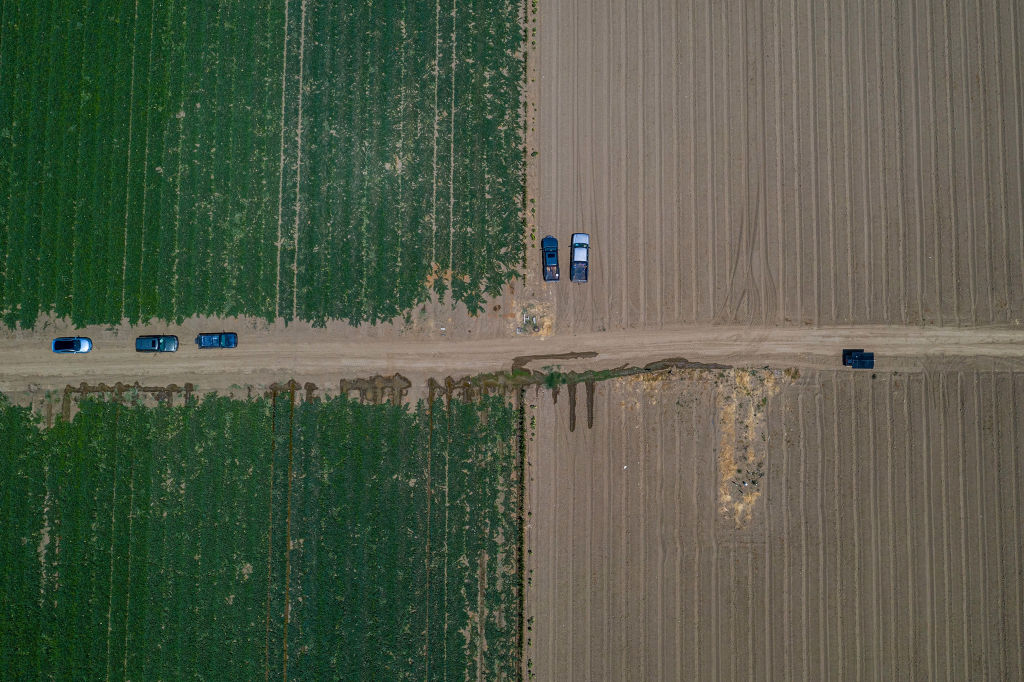
One of the greatest lessons of the pandemic is that we can meet the challenges of existential threats when we combine the collective power of our creativity, innovation and industry. As the climate crisis worsens, we need to address protecting and preserving water with the same urgency that we put into creating vaccines. We need to act like lives are hanging in the balance—because they are.
Water is already shaping our politics, our economy and our national security too. Whether it’s floods or droughts, storms or wildfires—too much water, or too little—water shapes lives in the United States and around the world. We are currently seeing this play out in real time in the West, which in many ways is ground zero for climate change, as we see the intersection between mega-drought and fire season colliding with one another.
Back in 2012, the intelligence community prepared a report on global water security, forecasting that within a decade water shortages and floods in many countries would “risk instability and state failure, increase regional tensions, and distract them from working with the United States.” The same report predicted that before 2040, the world’s demand for fresh water would not keep up with the supply, unless we managed our water far better than we do today.
More from TIME
Just this year, World Central Kitchen worked closely with the World Food Programme to deliver 27,000 food kits to Guatemalan families in the months after intense hurricanes ripped the country apart. The crops that sustained them were destroyed, and in some places it’s taken months for the waters to subside.
It’s clear from this example and too many others that water shortages and mega storms fueled by climate change are already endangering peace and prosperity in different parts of the world. If we’re being honest, we can see that potential here at home too. But the truth is, it doesn’t have to be this way. Water can and should be a source of cooperation, innovation, and generosity.
From the source to the sink, we need to be much smarter about how we manage water—and share our knowhow, technology and investment—so that nature and people can thrive together.
Let’s start with the biggest use of water: our food. Agriculture accounts for roughly 70 percent of water use worldwide. Our planet is groaning under the weight of our demands for more, as the population of the world grows while rising temperatures make fresh water harder to find.
We need to ask critical questions about how we can do more with less. Where can we farm smarter, using cover crops or more efficient irrigation to protect soil and water? What is the balance of having enough fish in the oceans to keep a thriving food chain, while also providing enough seafood to sustainably feed people and support fishing jobs?
The good news is that if we take the time to think and act collectively, there are solutions that will allow us to feed more people while also protecting our water.
We can apply innovations in technology like electronic monitors that help farmers and ranchers precisely manage the nutrients they put in the soil, so they don’t become pollutants in our water; or satellite navigation that help lower the costs of sustainable fishing for businesses around the world, so that the seafood industry is both environmentally and economically sustainable.
We also need to ask big questions about how we can best work with nature to mitigate some of the worst water impacts of climate change? Where can we support natural infrastructure to protect communities from water shortages, or floods, or storm surge?
We need to stop damaging the resources that we have, conserve what is left, and find ways to live differently. We need to farm on land and harvest from the sea with new methods that build a better future. Most importantly, we need to invest in one another—in communities that care for each other before disaster strikes, not just after the storm or the fire.
It is all too easy to take water for granted. But water is ever-present in the disasters we are enduring at home and around the world. It needs to be present in our thinking, our planning, and in our policies, so that we can plan for our future, too.
More Must-Reads from TIME
- Cybersecurity Experts Are Sounding the Alarm on DOGE
- Meet the 2025 Women of the Year
- The Harsh Truth About Disability Inclusion
- Why Do More Young Adults Have Cancer?
- Colman Domingo Leads With Radical Love
- How to Get Better at Doing Things Alone
- Michelle Zauner Stares Down the Darkness
Contact us at letters@time.com